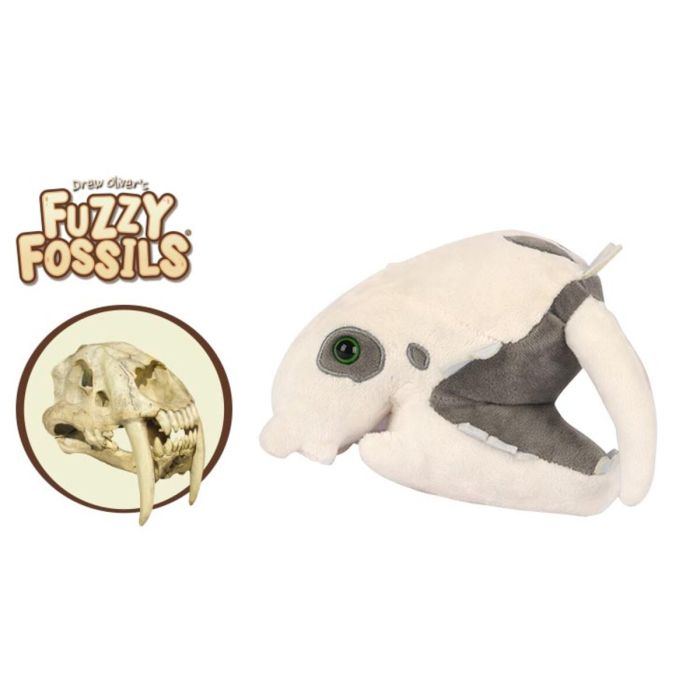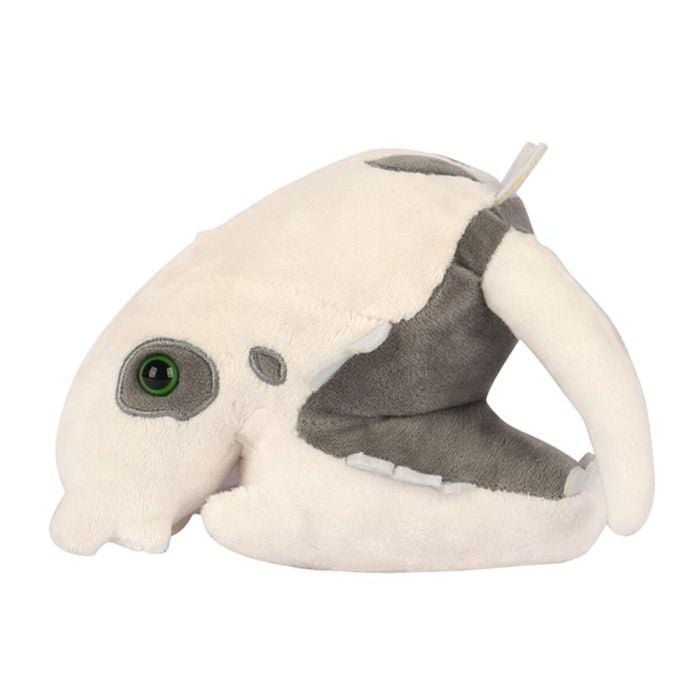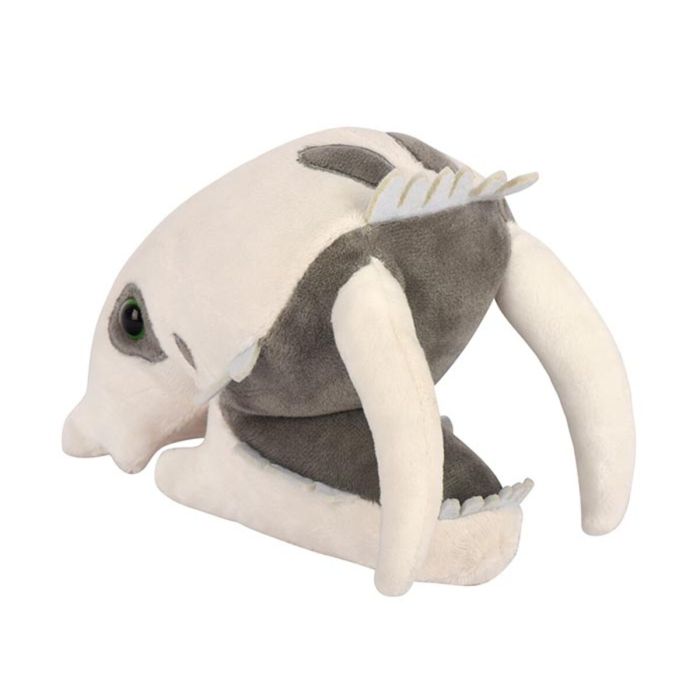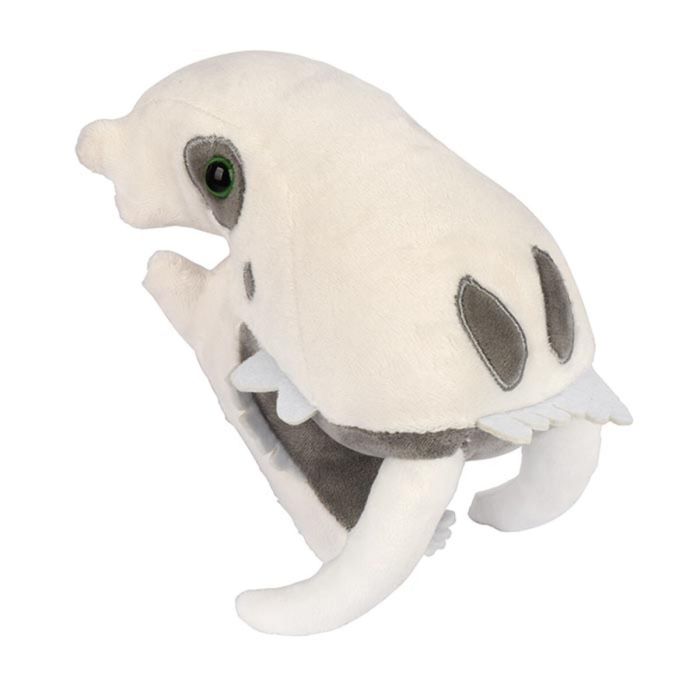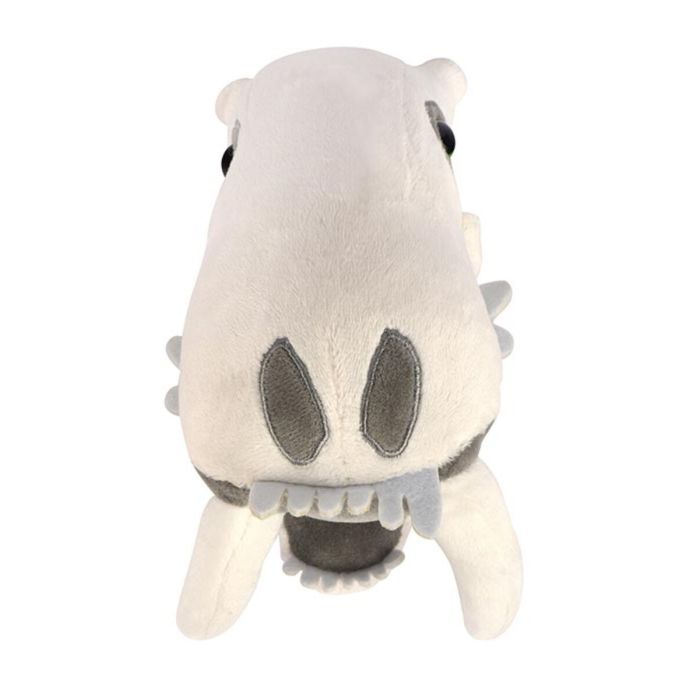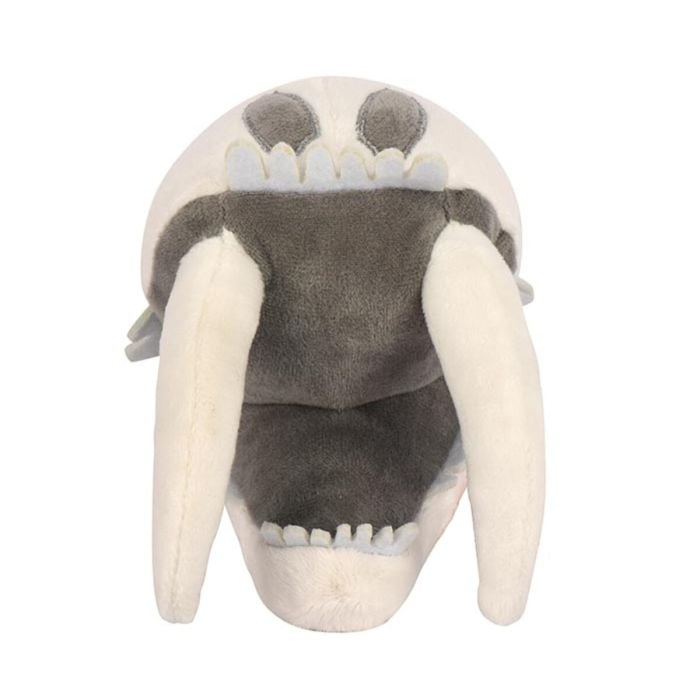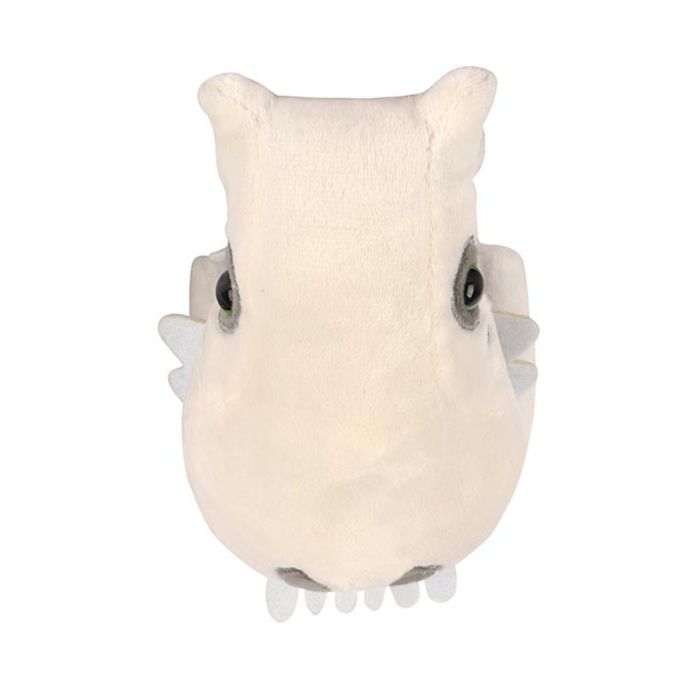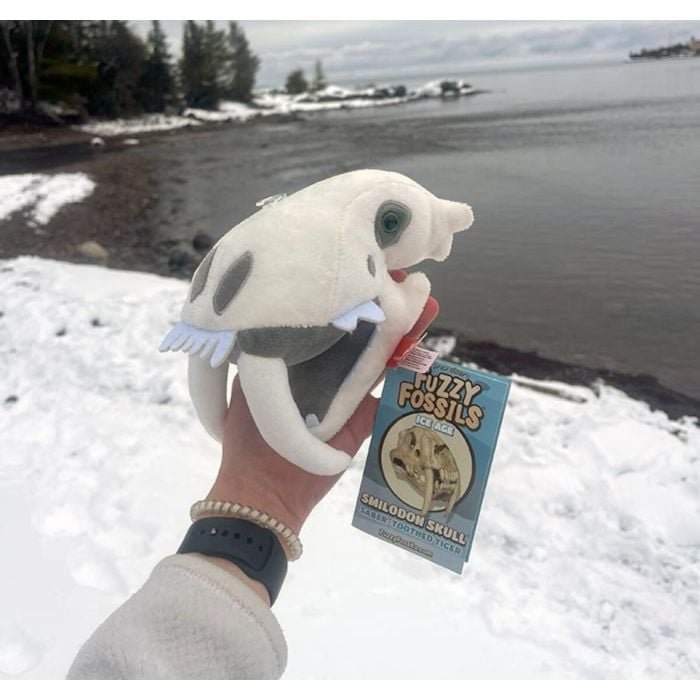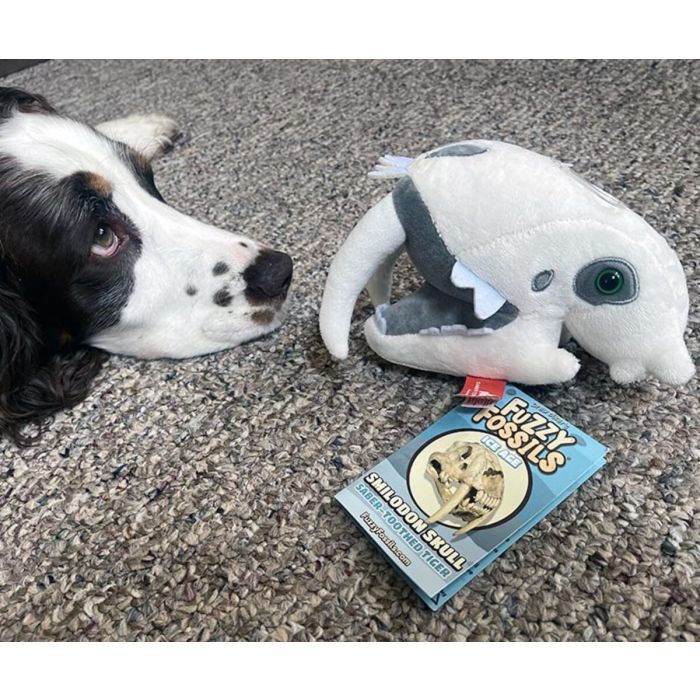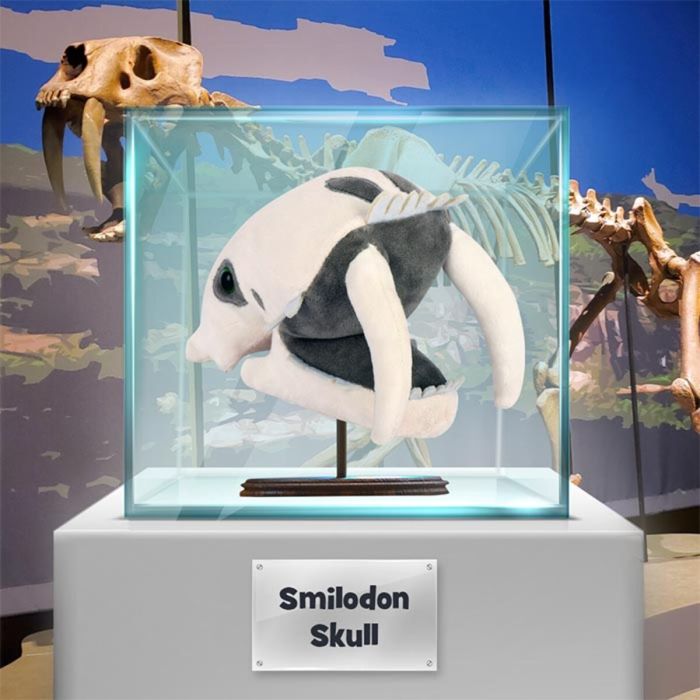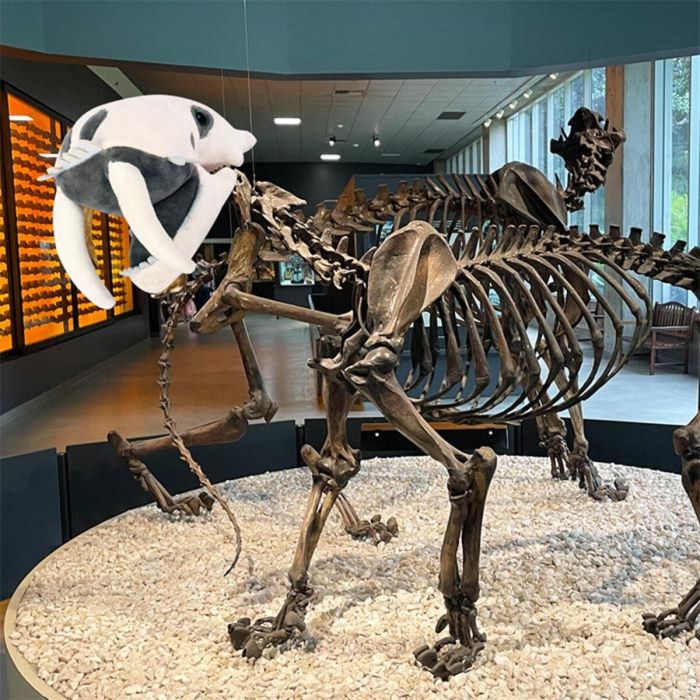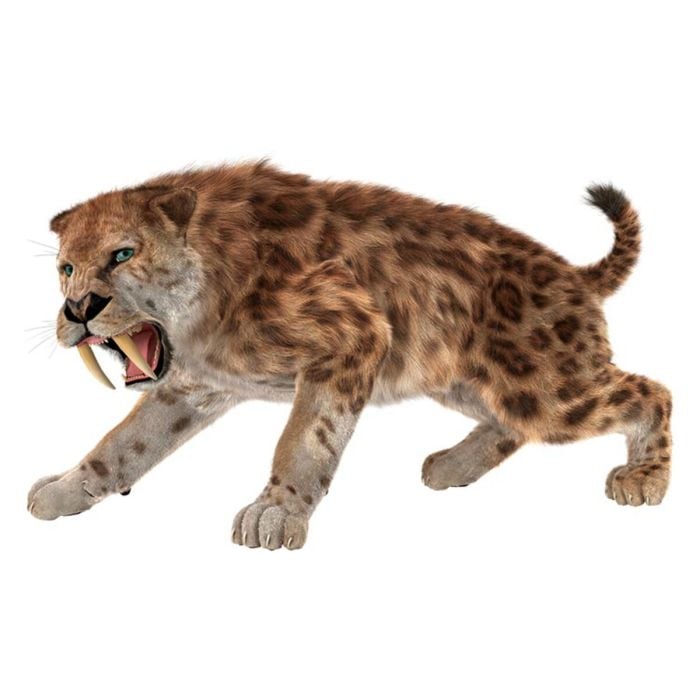Smilodon Skull (Saber-Toothed Tiger)
Introducing a NEW brand from GIANTmicrobes - Fuzzy Fossils!
Saber-toothed cats were members of the feline family, famous for their massive canine teeth. The most famous is smilodon, which lived for over 2 million years during the Pleistocene and Holocene epochs of the Quaternary period. Smilodon is sometimes called saber-toothed tiger, although it was not closely related to tigers.
Size: 18 x 13 x 9cm
Product Details
Additional Information
| Sizes | Giantmicrobes are based on actual microbes, cells, organisms and other critters, only 1,000,000 times actual size! Gigantic (GG) 40-60cm XL (XL) 25-38cm Original (PD) 12-20cm Minis (MM) 5-10cm each Keychain (KC) 5-10cm with clip |
|---|---|
| Materials | Plush from all new materials. Stuffed with polyester fiber fill. Surface washable: sponge with water & soap, air dry. |
| Packaging | Each plush microbe includes a printed card with fun, educational and fascinating facts about the actual microbe or cell. |
| Safety | Every product meets or exceeds U.S. and European standards for safety. For ages 3 and up. |
All about Smilodon Skull (Saber-Toothed Tiger)

Saber-toothed cats were members of the feline family, famous for their massive canine teeth. The most famous is smilodon, which lived for over 2 million years during the Pleistocene and Holocene epochs of the Quaternary period. Smilodon is sometimes called saber-toothed tiger, although it was not closely related to tigers. Smilodon means “scalpel tooth” since its canines were big and sharp, but also thin like a surgical blade.
With immensely powerful arms and a muscular 8-foot body, smilodon hunted giant ground sloths, camels, mammoths and other big-game ice age animals. It wrestled prey to the ground before delivering a killing stab with its saber teeth. Its impressive teeth were rather fragile and could break if twisted or came in contact with bone. Smilodon lived in social groups alongside many other carnivore species, so competition was severe. Many fossil specimens show injuries from fighting. Such individuals may have survived broken hips, teeth and jaws by scavenging from kills made by other group members.
Smilodon is well studied, with thousands of skulls and other bones excavated from caves, tar pits and other fossil sites. Over 10,000 years ago as ice sheets melted and the planet warmed, many large mammal species started to disappear. Paleontologists still seek to understand how saber-toothed cats, mammoths and other megafauna went extinct. Many theories suggest fierce competition for limited food intensified by the arrival of humans. Fossil evidence also indicates a bone disease may have played a role as this incredible animal faltered under environmental pressures.















